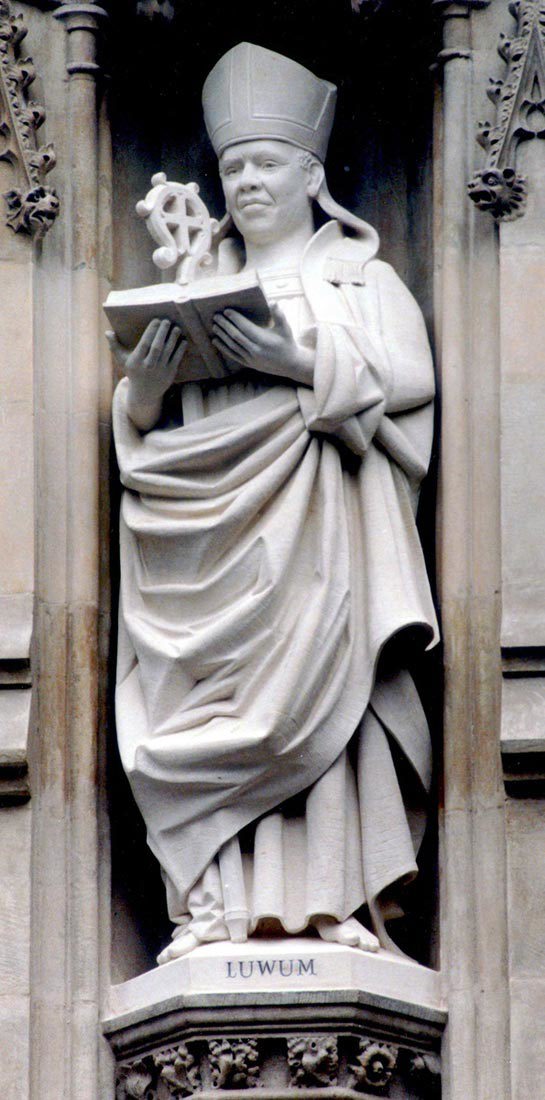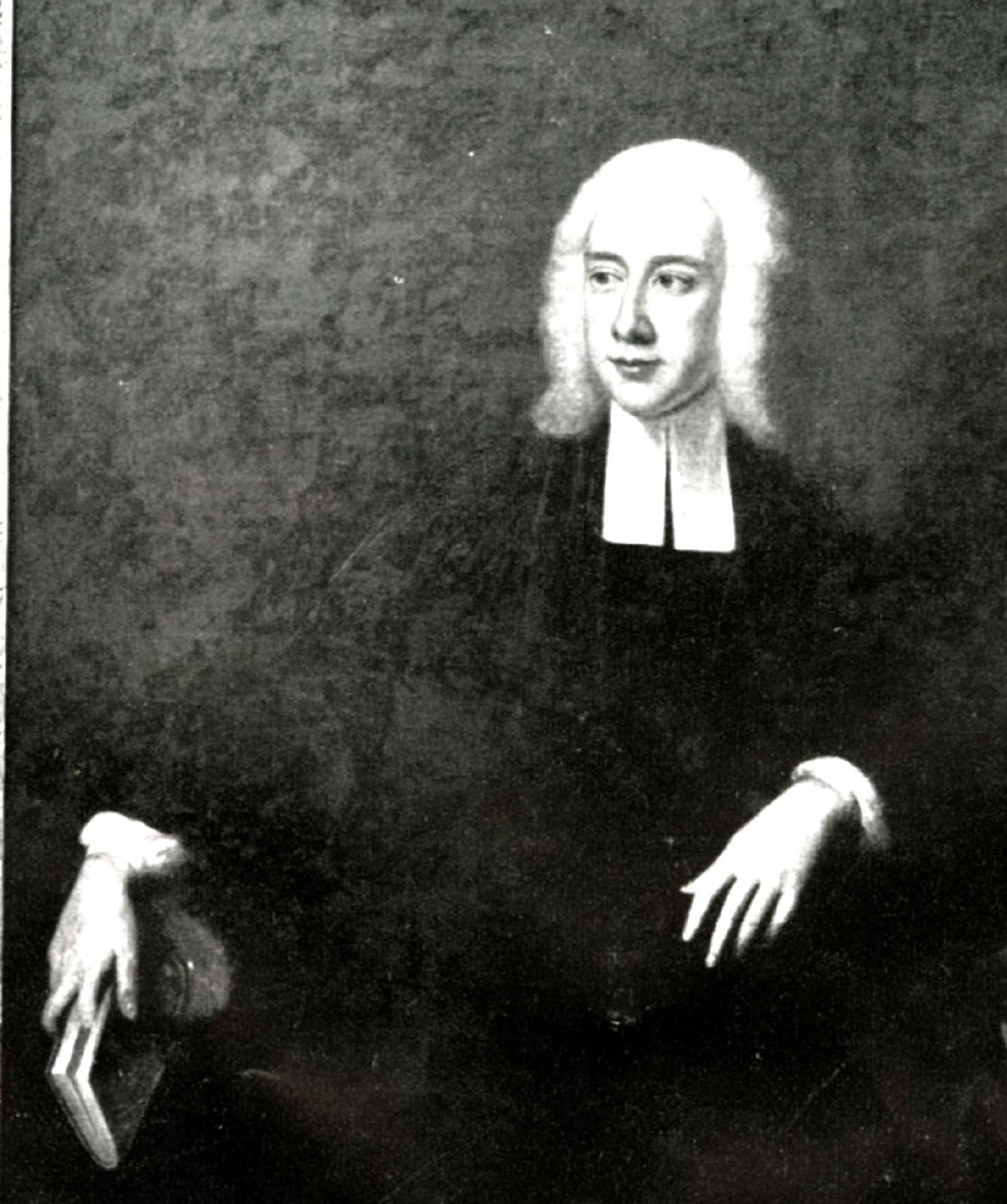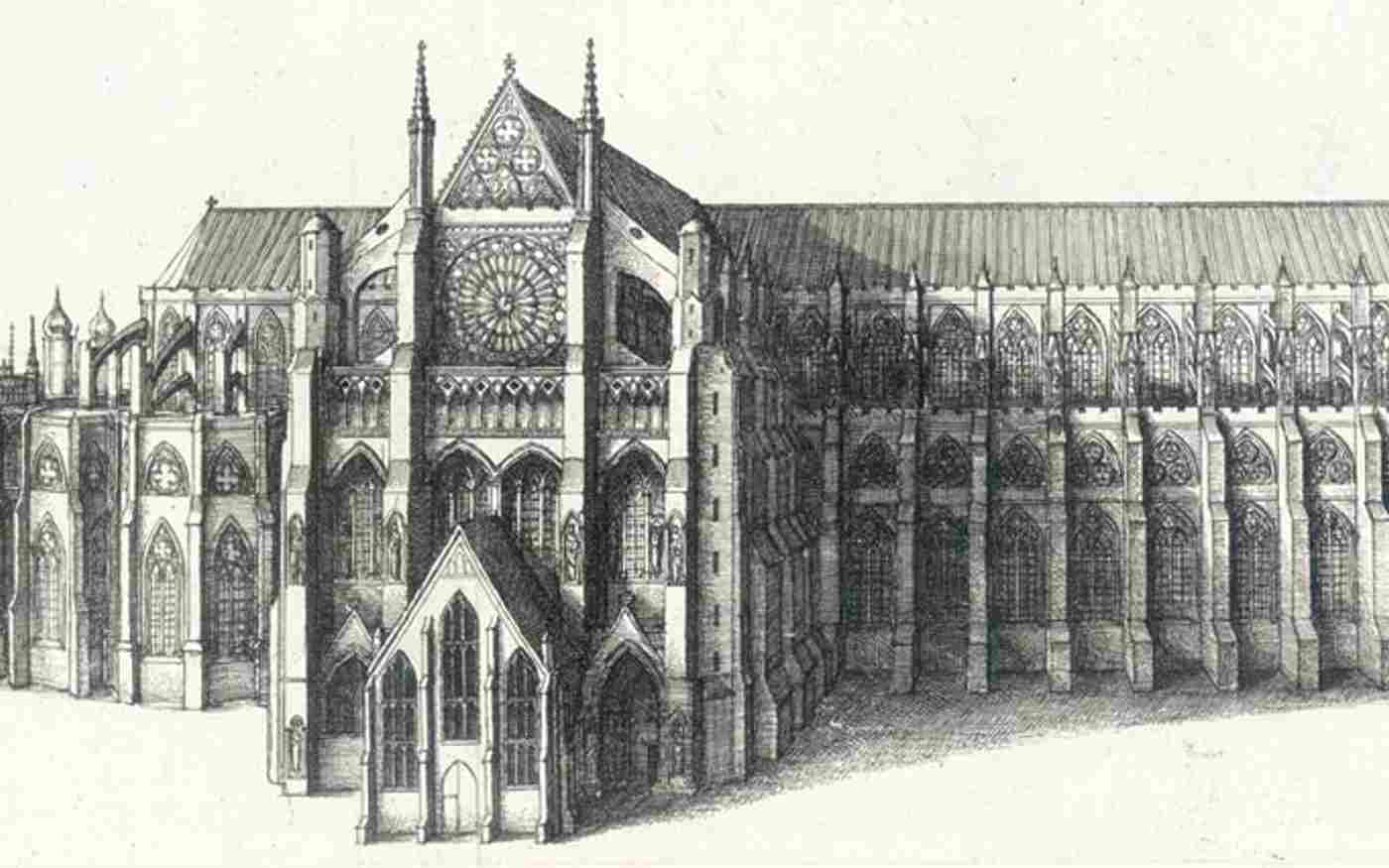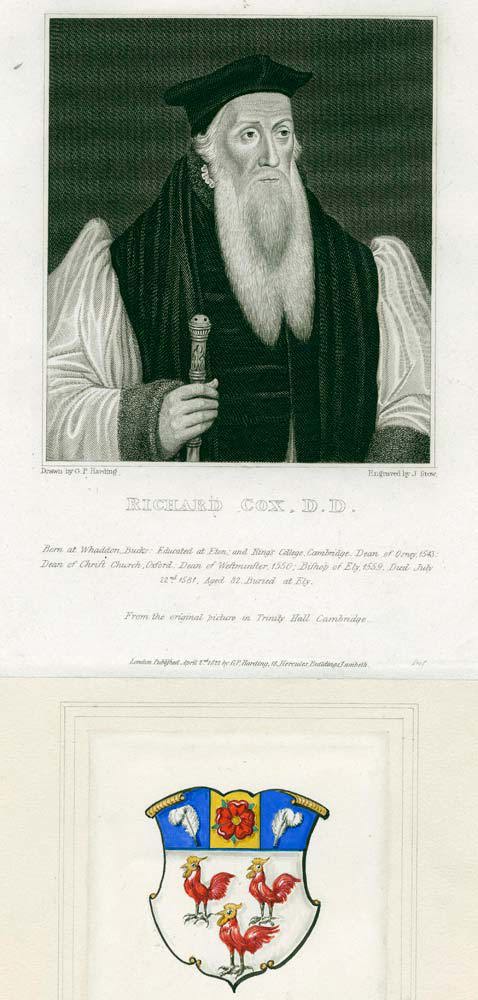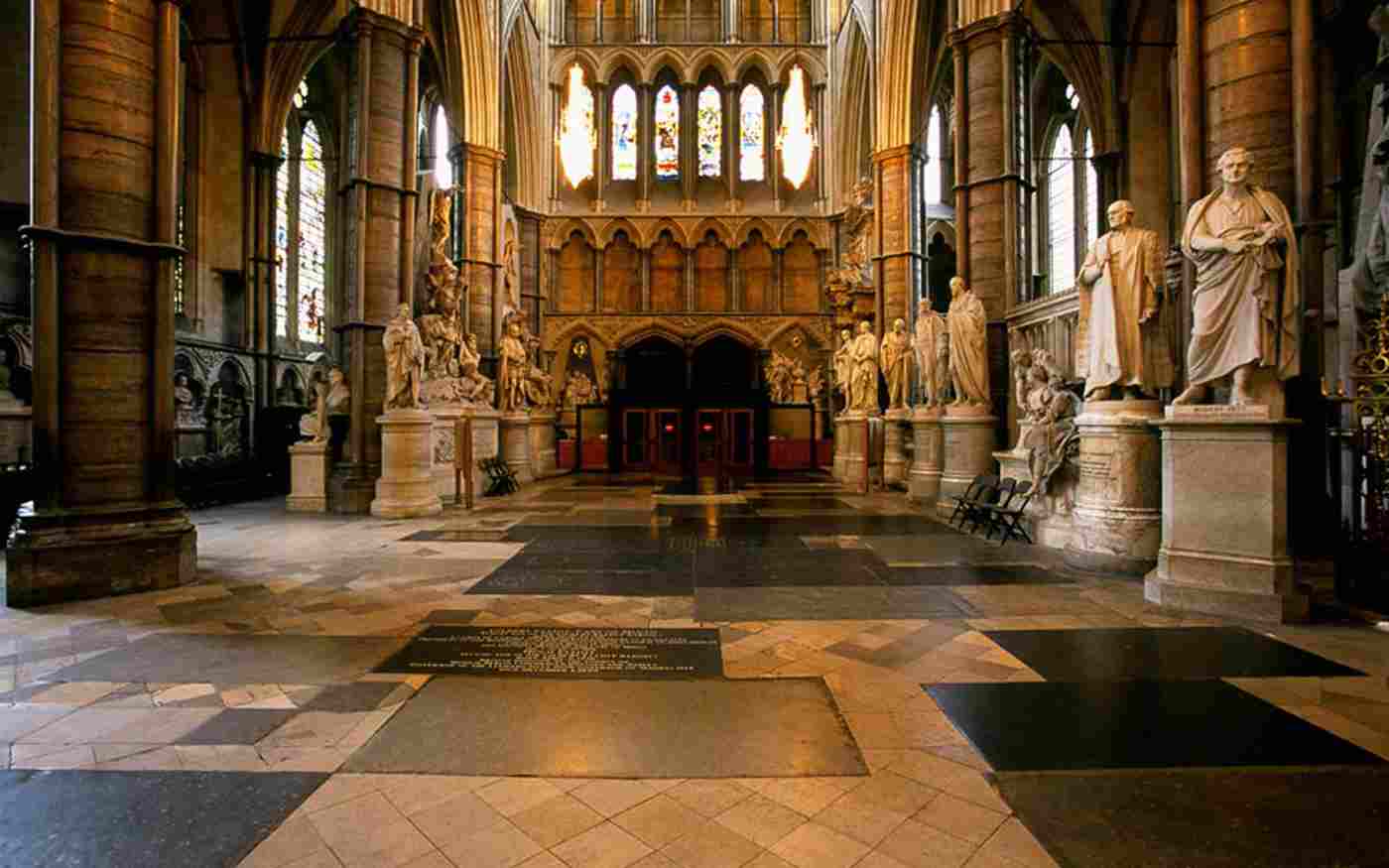Richard Courtenay
The grave of Richard Courtenay, bishop of Norwich, was re-discovered in October 1953 in the chapel of St Edward the Confessor in Westminster Abbey. A small hole in the floor at the base of the northern turret of Henry V's Chantry was discovered, with a cavity beneath. The area was carefully excavated and underneath a coffin board the skeleton of a man of six feet in height was found in a Reigate stone lined grave, with a floriated wooden crozier to his right, and a gold ring set with an oval ruby in the grave. The grave had been disturbed when the Chantry was built, and his leg bones had been put on top of his body. Half of the grave underlies the Cosmati pavement of the chapel and to construct the grave one of the marble matrix slabs of the pavement must have been lifted and then replaced as none of the mosaic pattern was lost.
The body was left in situ with the crozier but the ring, hinged to hold a small relic within, is on display in the Queen's Diamond Jubilee Galleries in the Abbey triforium.
His life
Richard was born in about 1381, a son of Sir Philip Courtenay of Powderham Castle in Devon and his wife Anne (Wake). Sir Philip was a son of Hugh, Earl of Devon (died1377) and Margaret de Bohun, a granddaughter of Edward I. Richard's uncle was William Courtenay (1341-1396), Archbishop of Canterbury.
He was ordained a priest in 1400, with a papal dispensation due to his youth. He was later Dean of Wells, Chancellor of Oxford university, and bishop of Norwich. Henry V appointed him keeper of his jewels and treasurer of the chamber. He was a trusted counsellor and friend of the king. He went to France with Henry's army in 1415 and died of illness at the siege of Harfleur, probably between 14th and 16th September. The King ordered his burial in the Abbey, but it was never marked. The King's own tomb was later erected a few yards away (they are not buried together as some books state).
Further reading
Oxford Dictionary of National Biography
"Recollections of a Westminster Antiquary" by Lawrence Tanner, 1969, describes the discovery
Powderham Castle is open to the public

This image can be purchased from Westminster Abbey Library
Image © 2025 Dean and Chapter of Westminster
